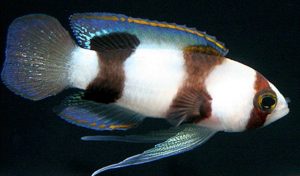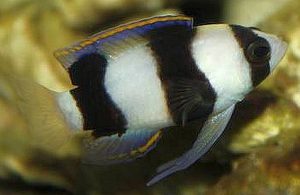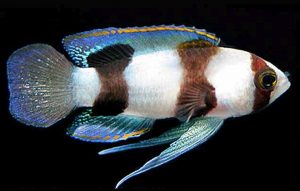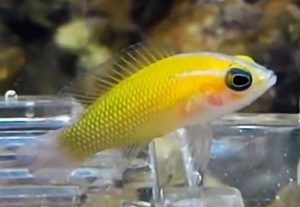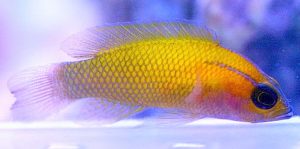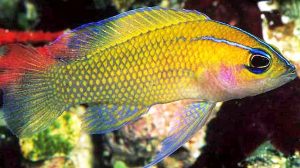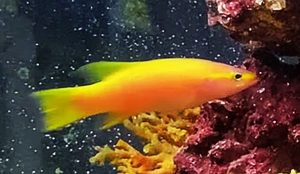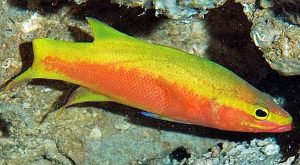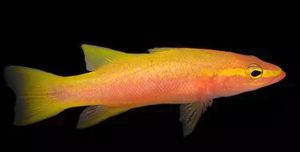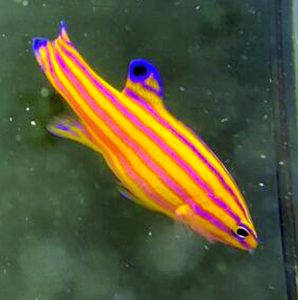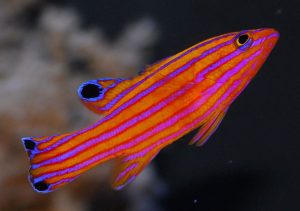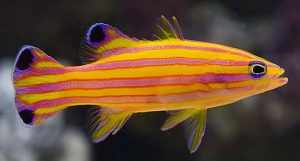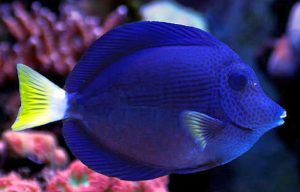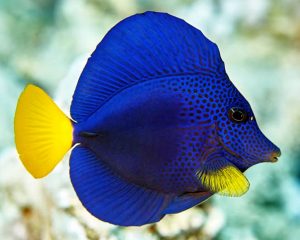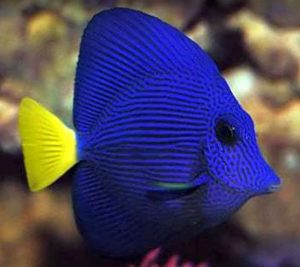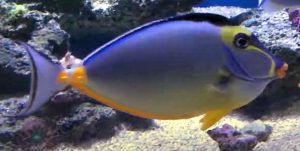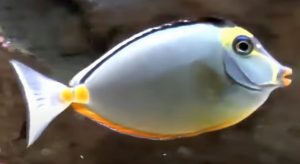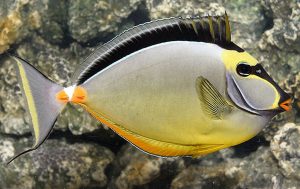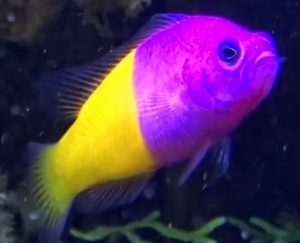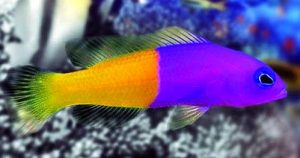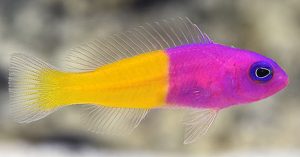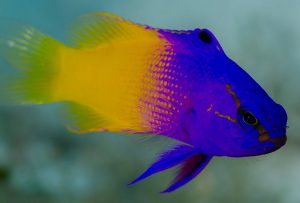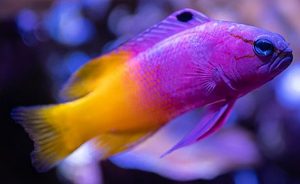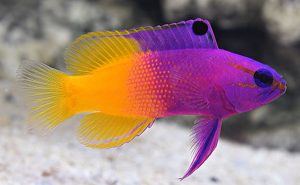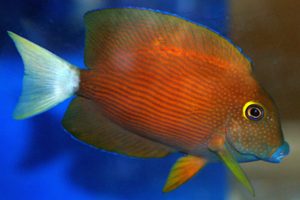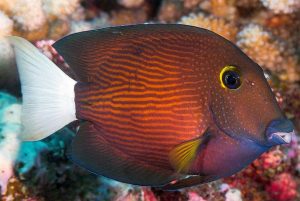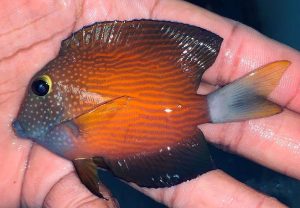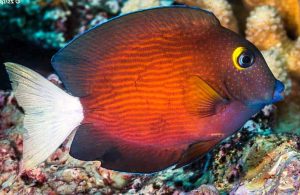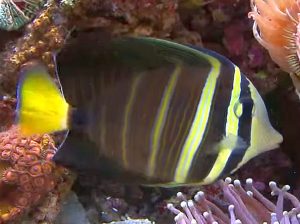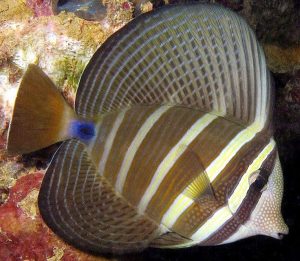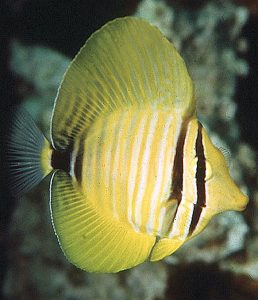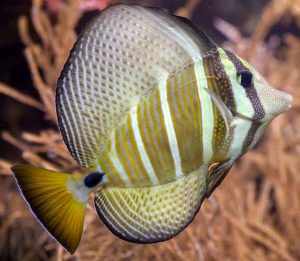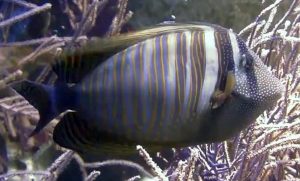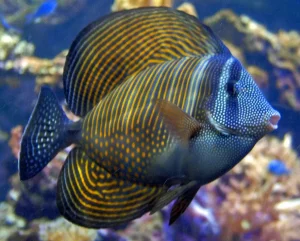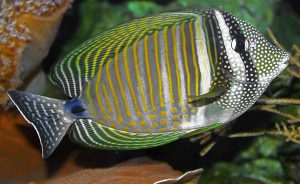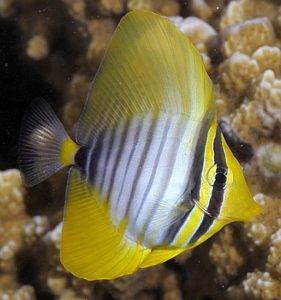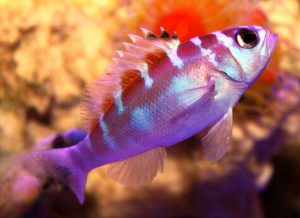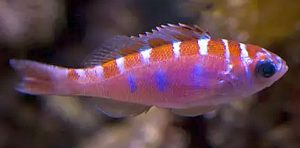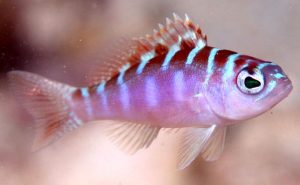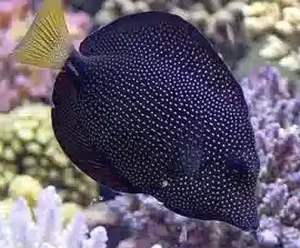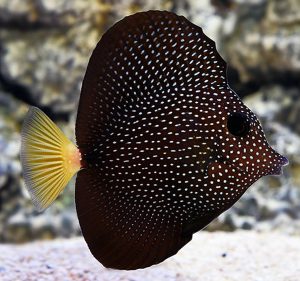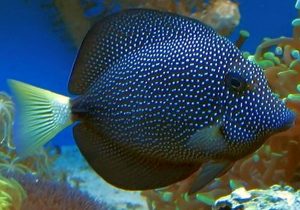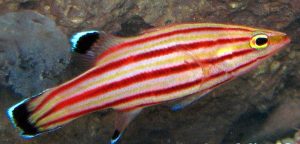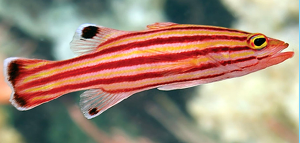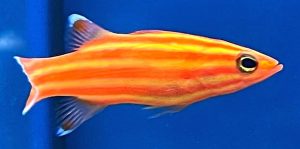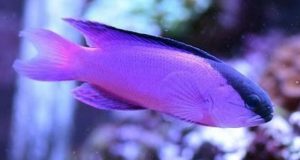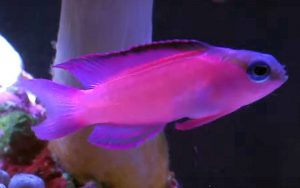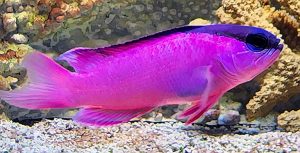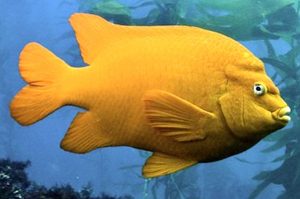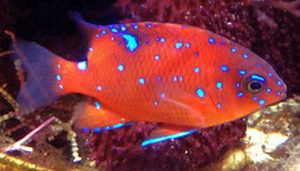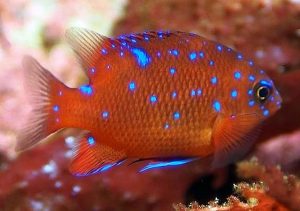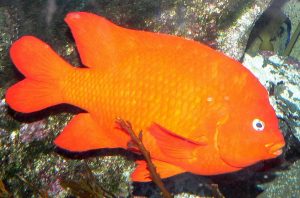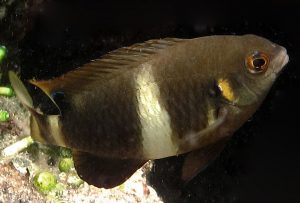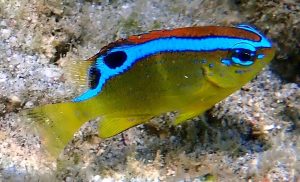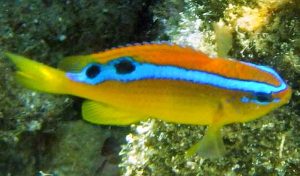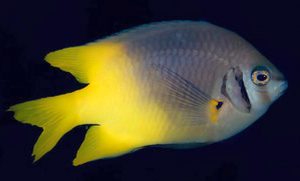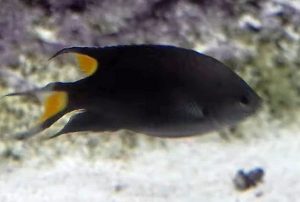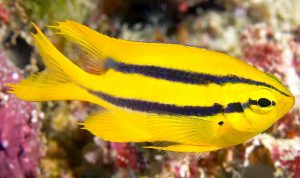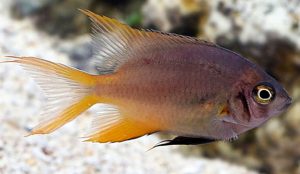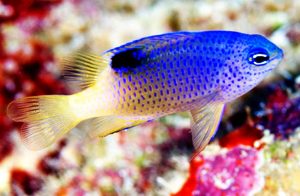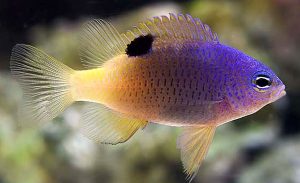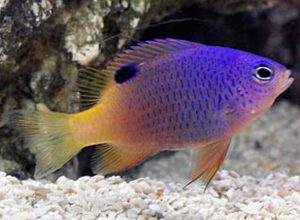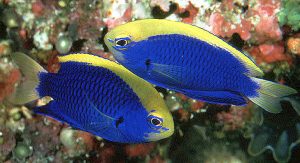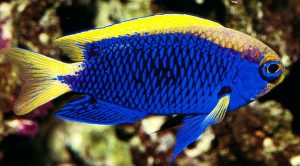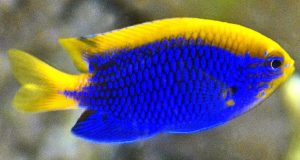The Hourglass Basslet (Lipogramma levinsoni) known to tropical fish keeping enthusiasts as the Banded Basslet, is a small deepwater species that is indigenous to Bonaire, Curaçao, and St Eustatius in the Caribbean and ranges throughout the Caribbean and West Atlantic to Dominica, San Salvador, Jamaica, and the Netherlands Antilles.
The Hourglass Basslet is a small, peaceful, demersal basslet that is encountered alone and often in pairs hovering among the small rocky rubble that is found on the gradual slopes of the deep outer reefs at depths from 300 to over 500 feet.
When approached by deep diving submersibles, the Hourglass Basslet will quickly disappear into the rubble on the slopes which makes capturing them difficult.
The Hourglass Basslet has an elongated, compressed body with a large eye large, a short snout, long, slightly pointed pectoral fins that reach past the base of the anal fin, round slightly pointed rear dorsal and anal fins and a rounded caudal fin.
The Hourglass Basslet has a snowy white to tan body color that is gray on the nape with three broad, black to dark brown vertical bars spaced across the body. The first bar starts at the forehead, intersects the entire eye and ends below the throat. The second hourglass shaped bar starts at the lower dorsal fin and ends around the rear of the pectoral fins. The third hourglass shaped bar begins at the rear base of the dorsal and ends at the rear base of the anal fin.
The dorsal fin is gray at the base with large brown to black blotches at the base above the second and third bars, painted at the rear with very light blue markings and bordered at the top by an orange margin. The bluish gray anal fin mimics the colors on the dorsal with the same orange margin, and the translucent blue gray caudal fin has an orangish base. The long pectoral fins are a light whiteish blue color that becomes slightly more blue at the rounded tips.
Males and females are unsexed.
Because they are collected by submersibles at depths from 300 to 500 feet, the Hourglass Basslet requires pristine water quality and a dimly lit tank with an aquarium chiller to maintain their optimal 67⁰F temperature requirements. They are best housed alone or in pairs in a mature reef tank of at least 20 gallon capacity with a finely crushed coral
or sandy substrate, plenty of live rock arranged into crevices, caves, and ledges for them to hide among, and sufficient swimming area.
Hourglass Basslets are peaceful, extremely shy, and will shelter or hover above their cave or crevice most of the time. They are completely reef safe and will not disturb corals, decorative clams, or most other reef inhabitants.
In a reef or FOWLR aquarium, they should never be kept with aggressive tankmates. Although peaceful tankmates like Chromis or Dartfish should be able to be kept with them, because of their small size, they are best enjoyed as a single species.
To date, the Hourglass Basslet has never been bred in an aquarium environment.
In their natural habitat, Hourglass Basslets are carnivores that feed primarily on zooplankton and tiny microorganisms. In an aquarium environment, they will accept small micron foods like baby brine shrimp, LRS Reef Frenzy Nano, PE Calanus, Brightwell Aquatics Zooplanktos
, or crushed up dried foods.
Because of the rarity of the species and depths that it frequents, the Hourglass Basslet (Lipogramma levinsoni) is rarely available to tropical fish keeping enthusiasts.
In addition to being difficult to catch, Lipogramma levinsoni are collected at depths from 300 to over 500 feet, which is well beyond the limits of scuba divers and most rebreather divers.
Specimens are normally collected by marine submersibles and decompressed in the same manner as the Golden Basslet (Liopropoma abberans).
Despite the factors that contribute to its rarity and five figure selling price; the Hourglass Basslet (Lipogramma levinsoni) is occasionally available to tropical fish keeping enthusiasts online from a select few specialty rare fish wholesalers and retailers on a back order basis at prices starting at $1,699.99 per individual, with an approximate 1 month lead time.
Minimum Tank Size: 20 gallons
Aquarium Type: Reef or FOLR
Care Level: Moderate
Temperament: Peaceful
Aquarium Hardiness: Hardy
Water Conditions: 68°F, dKH 8 – 12°, pH 8.0 – 8.5, sg 1.020-1.026
Max size: 1.5″
Color Form: White, Black, Brown, Blue, Orange
Diet: Carnivore
Compatibility: Reef OK
Origin: Indigenous to Bonaire, Curaçao, and St Eustatius
Family: Grammatidae
Lifespan: Unknown
Aquarist Experience Level: Intermediate/Expert


